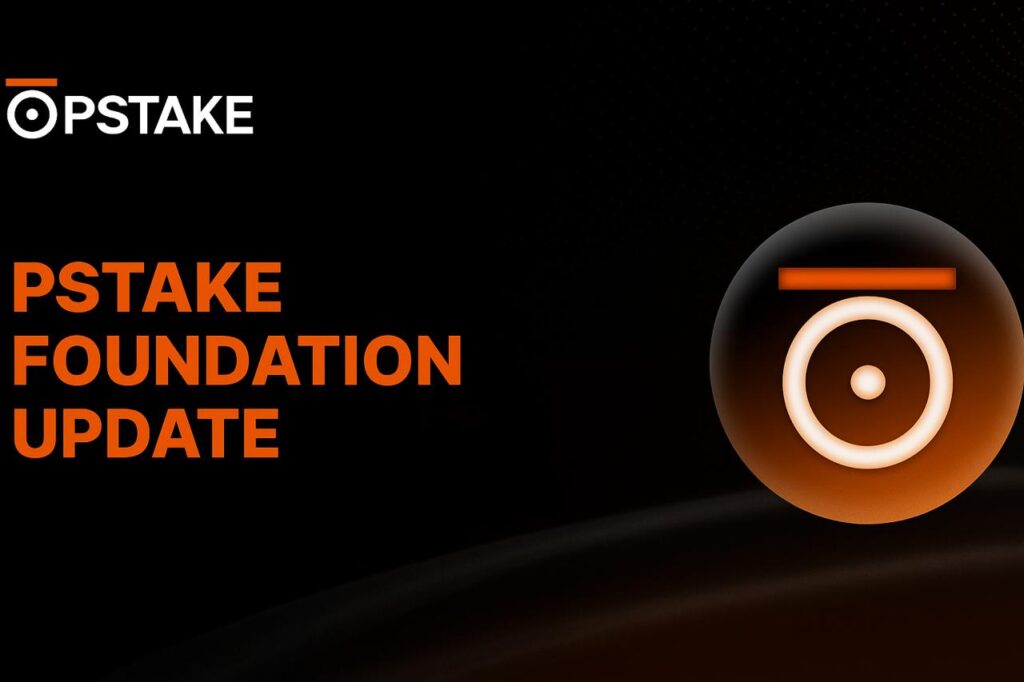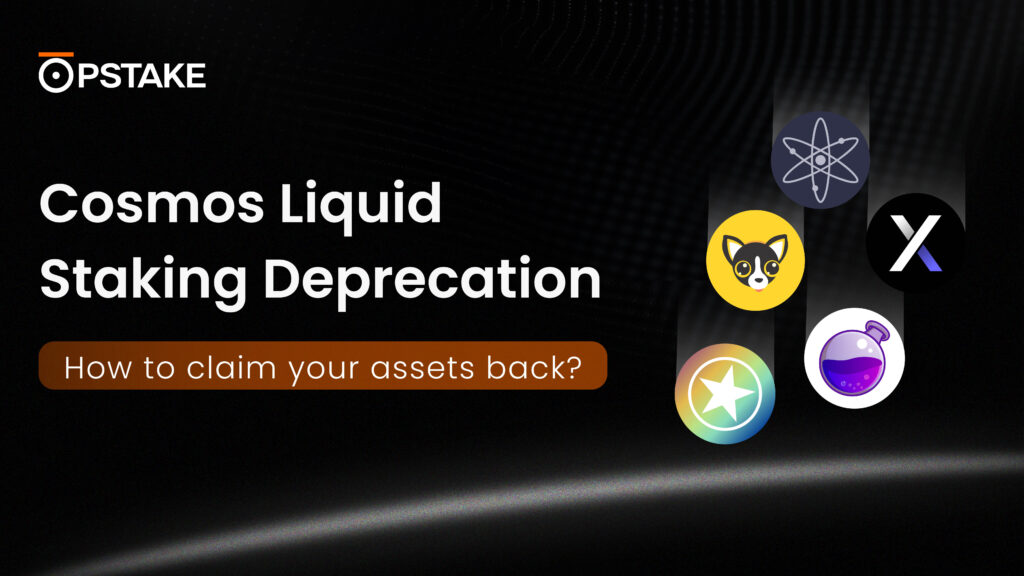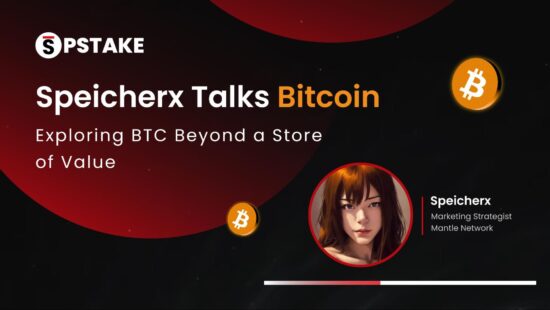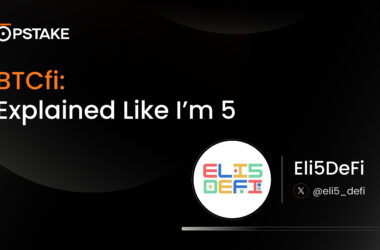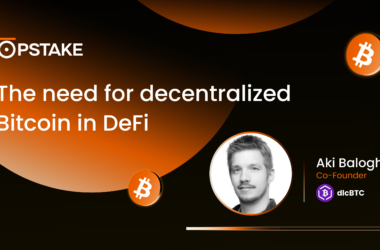Welcome to an exciting new series we’re bringing to pSTAKE, dubbed the X Talks Bitcoin series.
The X Talks Bitcoin series is not just another industry discussion. It’s a unique opportunity for the pSTAKE community and Bitcoin enthusiasts to gain exclusive insights into Bitcoin, the emerging BTCfi industry, and potential yield-generating strategies.
Our series will feature expert opinions, providing invaluable insights into the future of Bitcoin and how we can all best position ourselves. These discussions are not just relevant but crucial to all our readers, offering a “not-to-be-missed” and “thought-provoking” perspective on what’s coming next for Bitcoin.
Today, we’re privileged to have a conversation with Speicherx, the marketing strategist at Mantle Network and a core contributor to its latest innovation – FBTC. If you haven’t heard, Mantle is an Ethereum layer-2 cross-chain ecosystem that’s pioneered a vision for the mass adoption of token-governed technologies.
One of its latest flagship products is FBTC, a 1:1 BTC asset pegged to Bitcoin designed to unlock Bitcoin’s liquidity and turn it into a composable asset that can be used in yield generation strategies across multiple blockchains.
With the BTCfi discussion getting started, we began by asking Speicherx if she believed that DeFi for Bitcoin was just a narrative, or if it was a seismic shift in the crypto landscape.
1) Is BTCfi just a narrative, or are we seeing a tectonic shift in crypto/DeFi?
Bitcoin is the largest cryptocurrency asset in the industry.
For years, many have highlighted the ratio theory, which posits that BTC DeFi is a largely untapped area compared to ETH DeFi. It’s a strong narrative that is now gaining more adoption and attention.
Traditionalist holders may disagree, as many OGs stick to the idea that Bitcoin should strictly be a SoV (store of value) asset. However, there is significant potential for Bitcoin as a collateral asset. Bitcoin is the original DeFi, decentralized, digital gold, and your own banking system.
The last two years have brought rapid changes that some may have never imagined possible.
Countries are adopting BTC as a national currency, companies are adding it to their reserves, and there are now more than 10 Bitcoin ETFs being traded on Nasdaq. Alongside rapid developments in Runes, BRC20s, and Ordinals, it’s more than just a narrative. It’s a literal shift, and there is a lot more interest brewing. The need for yield on Bitcoin is greater than ever.
We then continued to ask Speicherx if other layer-1s will start to lose momentum if developers had the potential to build on top of Bitcoin.
2) Would other alt-L1s of ETH become irrelevant if we’re able to build for (and on top of) Bitcoin?
I don’t believe this. It would literally be the same as calling other chains, regardless of whichever L1/L2, negligible if you’re using one much more than the other. They may seek to solve different purposes or verticals. Solana continued to thrive in spite of Ethereum’s vast ecosystem success and growth.
While yes, the problem of chains that seem overinflated or copied with forks existing across ecosystems, and/or lack of useful dApps, exists, I think, ultimately, the crypto world should operate in an interoperable, interchain manner.
People don’t have just one entity controlling all their funds in real life, nor should that be the case in crypto. In a world full of decentralized opportunities and innovation, many teams will target different or all existing problems, such as tech pointers like scalability, or BD pointers like the lack of good incubation of assets, yield, and more. The demand for digital assets grows more insatiable everyday.
Finally, we wrapped up by asking what was the most important part of bringing institutions into trusting the newly emerging BTCfi industry.
3) What is important for the ecosystem and projects to give institutions a trusted way to participate in BTCfi?
Exposure to high yield generation: Today, the market cap of BTC stands above $1.4 trillion, yet the only yield most would get is from price token performance.
Currently, not only is it relatively hard to get onboarded as a retail user, but the Bitcoin ecosystem also suffers from a lack of infrastructure solutions and liquidity fragmentation. The simplicity of Bitcoin’s basic scripting capabilities has ensured that Bitcoin remains robust and secure. However, this simplicity limits the complexity of operations that can be directly executed on the blockchain.
To overcome these limitations, developers are creating Layer-2 solutions that enable faster and more cost-effective transactions. However, due to this inherently difficult programming environment, liquidity fragmentation occurs as a result.
Building scalable DeFi dApps is important, but ensuring omni-chain liquidity is also crucial. Once that happens, yield opportunities on Bitcoin will be paramount.
About Mantle
Mantle is the premier on-chain ecosystem for quality assets across multiple blockchains. Mantle has pioneered a vision for the mass adoption of token-governed technologies, with a proven track record of endorsing, incubating and building successful assets and decentralized applications (dApps). Now, it’s setting its sights on revolutionizing the landscape once again with the introduction of the largest-ever omnichain BTC.
About FBTC
Maintaining a 1:1 peg to Bitcoin, FBTC is designed to enhance its utility beyond a store of value by introducing a BTC asset that is liquid and easily composable in various yield enhancement strategies.


